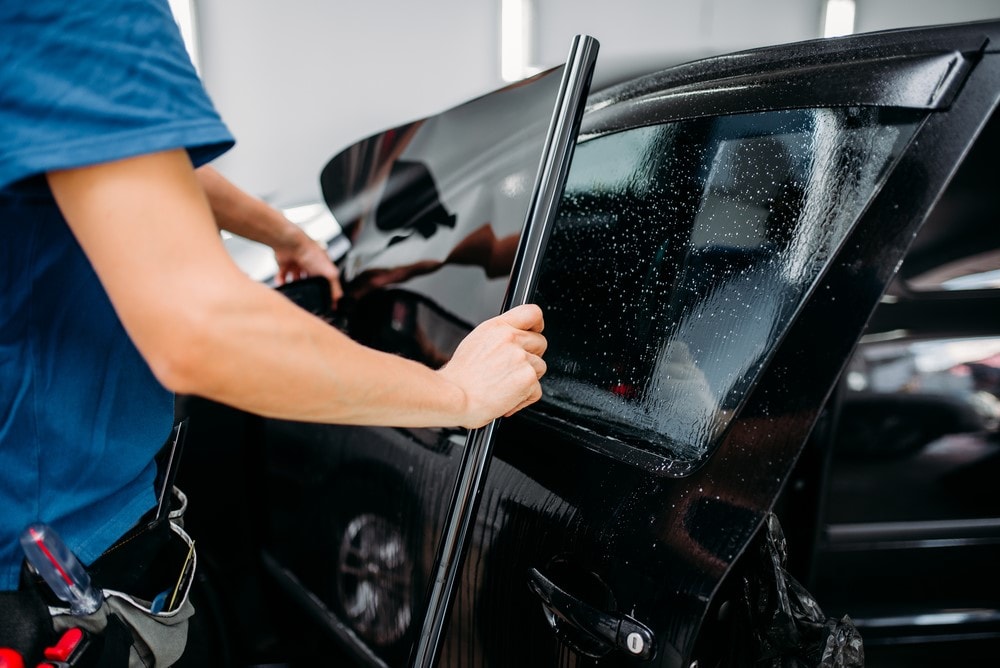Discover the Advantages of UV Defense with Automobile Window Tinting
Discover the Advantages of UV Defense with Automobile Window Tinting
Blog Article
Home Window Tinting Laws and Standards: What You Need to Know Before Tinting Your Car
Before continuing with home window tinting for your automobile, it is important to acquaint yourself with the diverse regulations and standards that govern this method across different states. These guidelines dictate the allowable levels of tint darkness, typically measured by noticeable light transmission (VLT) percentages, and consist of certain specifications for front windscreens intended at guaranteeing roadway safety and security.
Review of Window Tinting Laws
Home window tinting regulations are often based on variation across different territories, showing neighborhood policies and security considerations. These legislations determine the acceptable levels of tint darkness and reflectiveness on vehicle windows, guaranteeing that chauffeurs keep appropriate presence while likewise safeguarding versus damaging UV rays and warm.
A lot of policies identify window tinting based on the Visible Light Transmission (VLT) percentage, which suggests the amount of light that can travel through the window. Normally, lower VLT portions indicate darker colors. Regulations usually set apart between the front, side, and rear windows, with stricter restrictions related to the front windscreen to improve safety and security for both the driver and other roadway customers.
Additionally, some territories enforce constraints on the reflectivity of the tint, protecting against too much glow that can impair presence. Exemptions to these laws may exist for individuals with specific clinical conditions requiring extra sun protection. Compliance with home window tinting policies is important, as violations can lead to penalties, necessary removal of the color, and prospective increases in insurance policy costs. It is necessary for vehicle proprietors to familiarize themselves with local laws before continuing with window tinting installments.
State-by-State Color Rules
Recognizing the specific home window tinting guidelines in each state is crucial for vehicle owners seeking to abide by the regulation. Each state in the united state has actually developed its own collection of rules governing home window tinting, which can vary substantially. These regulations commonly dictate the permitted levels of tint darkness, the sorts of home windows that can be tinted, and any kind of medical exemptions that might apply.
For example, states like The golden state have rigid restrictions on tint darkness for front home windows, while others, such as New Mexico, might allow darker tints. In addition, particular states mandate certain presence percents for various home windows, including the windshield, front side home windows, and rear home windows. It is crucial for auto proprietors to familiarize themselves with their state's legislations to prevent prospective penalties or charges.
Moreover, some states might call for a qualification sticker label to be placed on colored windows, suggesting compliance with state legislations. Failing to follow these laws not just runs the risk of legal repercussions yet can additionally influence safety and exposure while driving. Therefore, lorry proprietors should perform thorough study or seek advice from neighborhood authorities to make certain full understanding and conformity with state-by-state color guidelines.
Allowed Color Types and levels
Many vehicle proprietors may be amazed to discover that allowed color degrees and kinds vary extensively across various states. Each state has actually established its very own guidelines relating to the acceptable darkness and reflectivity of home window color, typically measured by Visible Light Transmission (VLT) percents. VLT describes the amount of light that can go through the tinted home windows; therefore, a reduced percentage indicates a darker tint.

Additionally, the sorts of color products allowed can differ, with some states restricting mirror-like or metallic coatings. It is necessary for lorry proprietors to acquaint themselves with their state's certain regulations to guarantee compliance. Non-compliance can cause fines, necessary removal of the tint, or other legal effects, making it necessary to recognize these guidelines before proceeding with setup.
Medical Exceptions for Tinting
While not all states offer allowances for medical exceptions pertaining to window tinting, those that do acknowledge the necessity for specific people to improve visibility and convenience due to medical conditions. Different medical problems, such as lupus, skin cancer, and specific eye disorders, can make individuals particularly sensitive to sunshine. Subsequently, these individuals might call for darker tints to shield themselves from harmful UV rays and glare.

It is very important to note that despite a medical exemption, there may still be restrictions on the level of color permitted. Conformity More Help with state regulations makes sure that individuals are both protected and within lawful limits. Those thinking about clinical exceptions must call their neighborhood Department of Motor Automobiles or comparable authority to understand the treatments and needs essential to get an exception properly.
Charges for Non-Compliance
Stopping working to conform with window tinting regulations can bring about significant charges, which differ by state. Regulation enforcement companies are equipped to issue citations for cars that do not abide by the specified tinting policies. These fines typically include penalties, which can range from modest amounts to several hundred bucks, depending on the seriousness of the Web Site infraction and the state concerned.
In some territories, duplicated offenses may cause escalating fines or added penalties, such as mandatory court looks. In addition, non-compliance might demand the removal of unlawful tinting, often at the owner's expense. In severe instances, habitual wrongdoers might deal with suspension of their car enrollment till conformity is attained.
Additionally, insurance coverage implications might emerge from getting several citations for window color offenses. Insurance firms might see such infractions as an indication of riskier actions, possibly leading to raised premiums or difficulty in protection.
To avoid these fines, it is important for automobile proprietors to acquaint themselves with their regional window tinting laws and make certain that their vehicle complies (Window Tinting). This proactive technique not just stays clear of lawful ramifications but also advertises roadway safety and security
Final Thought

The majority of guidelines categorize home window tinting based on the Visible Light Transmission (VLT) portion, which suggests the amount of light that can pass through the home window. Conformity with window tinting policies is critical, as violations can result in penalties, obligatory removal of the color, and prospective rises in insurance costs.Understanding the certain window tinting guidelines in each state is vital for automobile proprietors seeking to abide with the legislation. These guidelines frequently dictate the permitted degrees of tint darkness, the kinds of home windows that can be tinted, and any type of medical exceptions that may apply.
For instance, states like California have stringent restrictions on tint darkness for front home windows, while others, such as New Mexico, might allow darker colors.
Report this page